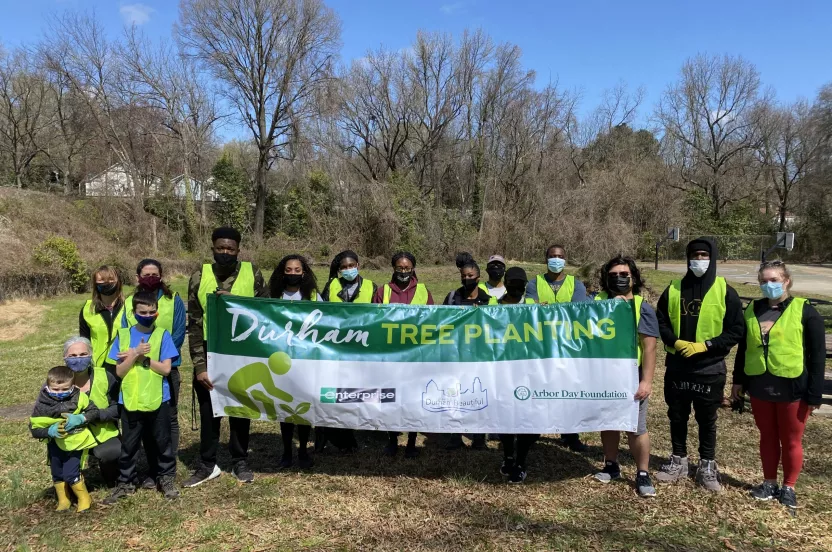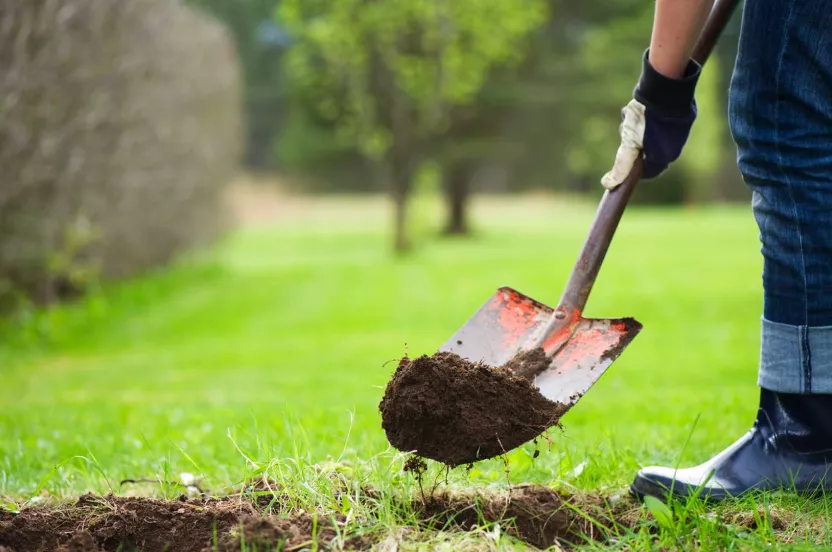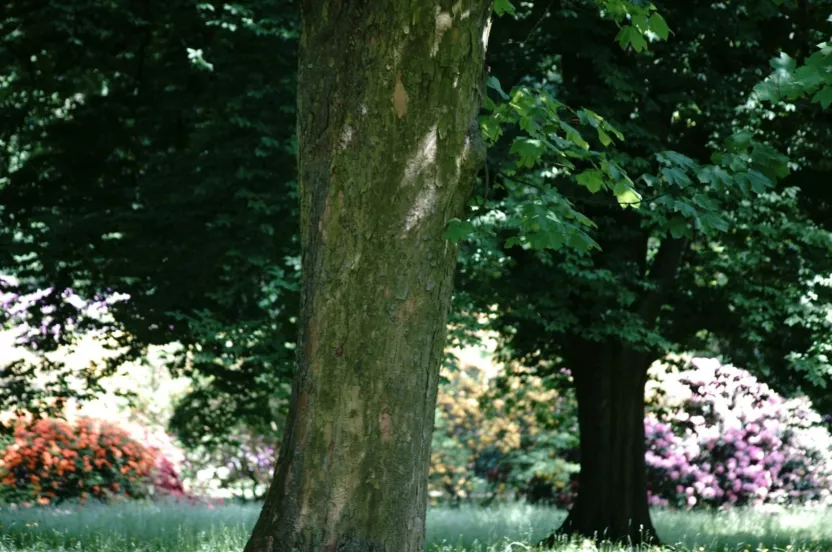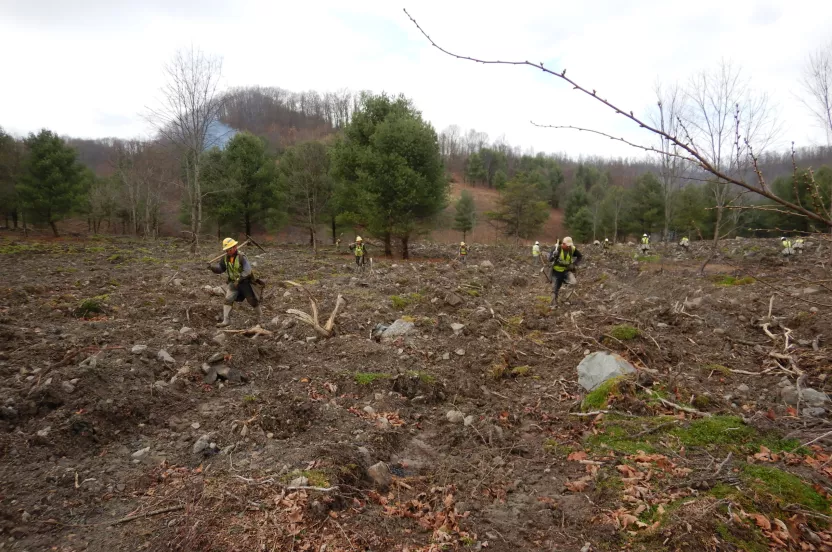The Arbor Day Foundation is pledging 10 million trees to areas impacted by hurricanes Helene, Milton Help us replant
What is "edible landscaping"? Defined as an "integration of food-producing plants within an ornamental or decorative setting," edible landscaping can create a productive, beautiful yard that nourishes body and soul.
Why incorporate food-producing plants in your yard?
-As "local" as it gets: you know exactly where your food comes from, and have control
over any pesticides or sprays that are used. We all can agree that food grown in your own backyard tastes so much better than produce picked before its prime and shipped thousands of miles. Additionally, it's a great way to supply yourself with fruits or veggies that may not ship well or are hard to find or expensive to buy in grocery stores.
-Money savings: growing your own fruit trees and nut trees, as well as vegetable and herb plants, can save major bucks on your grocery bill—a family of four can save $1,000 a year by devoting just 100 square feet of the yard to planting edibles, says Lindsey Mann, owner of Sustenance Design in Decatur, Ga. What's more, an edible landscape can "begin reversing the cash flow of a grass lawn not only within the first year, but within the first few months," according to Mann. The rate of return will increase through the years once the start-up costs have been paid and the fruit trees mature and start producing. Why not eat your yard instead of it eating at your pocketbook?
-Added beauty: many fruit and nut trees can be simply spectacular additions to a yard with their profusions of blooms or lovely autumn color. Apples, apricots, cherries, crabapples, peaches, pears, plums, quince, serviceberry and almonds are flowering favorites, while blueberries, crabapples, persimmon and serviceberry shine with their fall foliage.
-Share the wealth: you might even get to the point where you have more than you can even eat! Sharing your excess fruit, nuts, veggies or herbs with neighbors is always a nice gesture or a great way to welcome a new neighbor to the block. You could even share your bounties with a local food bank, for which fresh, local produce is often in short supply.
-Beneficial effects of nature and learning opportunities: let's not forget the immense personal satisfaction you get knowing you grew your own food, as well as the opportunity to get outside more and tend your plants (an activity repeatedly shown to be a health booster and stress-reducer). Not to mention what educational gold mine it could be for children: both learning about natural, scientific processes and healthy eating habits.
However, it is important to be realistic and know that it may be wise to start out small. Rosalind Creasy, an edible landscaping expert, advises:
"Small and simple means you can easily maintain what you've started. Temper enthusiasm with the knowledge that many edible plants not only need maintenance (mulching, watering, weeding, feeding, and pruning), but also take effort in the form of harvesting and cooking- and preserving a large harvest. Choose dwarf fruit trees over standard-size trees and select fruit varieties that spread the harvest over many months."
Some great suggestions for planting based on all the spaces you have (or don't) from Ohio and Purdue Extension offices:
-Get creative with substitutions! Where you might have planted a shade tree, plant a fruit tree. Where you need a deciduous shrub, plant currants or hazelnuts. Where you have always had chrysanthemums, plant bachelor's buttons—you can eat them.
-Strawberries and shorter herbs are a great choice for low ground cover (plant strawberries in/onto a barrel if you're lacking more in horizontal space).
-Need to keep it somewhat low to the ground but still have some room to grow upwards? Plant blackberries (erect), blueberries, currants, elderberries, gooseberries, quince, raspberries, serviceberry—these are all shrubs that grow 3-8 feet in height.
-Have enough space for something 8-15 feet? Try dwarf and semi-dwarf apples; dwarf apricots, cherries(tart), peaches, European pears and plums; filberts, paw paw, quince and serviceberry.
-For space allowing for 15-30 foot trees, great choices include standard-sized apples, cherries, crabapples, pears, or serviceberry.
-Tons of space? Butternuts, Chestnuts (Chinese), Hickories, Persimmon, Black Walnuts and Persian Walnuts will reach over 30 feet in height.
(Still having a hard time choosing? The Arbor Day Foundation's Tree Wizard is a free online guide to help you quickly and easily select a fruit or nut tree).
Creasy sums it up best here:
"Certainly, an edible landscape is one of the most rewarding yards one can have. You'll be able to grow tasty treats that can't be bought for love or money, often with enough to share with friends and neighbors. An edible landscape is the only form of gardening that truly nurtures all the senses."
Do you practice edible landscaping? What food-bearing plants do you grow and what would you like to start growing? Share in the comments!
Happy planting (and eating!)
Sources & additional recommended reading:
- Purdue University Cooperative Extension
- Ohio State University Extension
- How to Cash in on An Edible Landscape - Mother Nature Network
- Edible Garden How-To - Rosalindcreasy.com
- Adding Fruit Trees to Your Landscape Design - Arbor Day Blog
- Edible Woody Landscapes for People and Wildlife - UNL School of Natural Resource Sciences and Cooperative Extension






